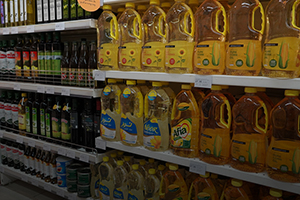3D Printing with Cooking Oil

Scientists have found a way to turn a major global environmental challenge into a useful material by transforming used cooking oil into a high-quality resin for 3D printing. Because it’s made from natural products, the new material is biodegradable. It’s also cheaper and easier to make than resins derived from fossil fuels.
In spite of the fact that many restaurants have to pay to dispose of it, only a local McDonald’s responded to the team’s request for waste cooking oil needed to test their new method in the lab. Using a one-step process, one liter of oil yielded 420 milliliters of resin that was capable of printing features as small as 100 micrometers (about four thousandths of an inch). In addition, they demonstrated that the structure – a plastic butterfly – was structurally and thermally stable, and that the new material cures to a solid when exposed to sunlight, making it a viable building material.
While other uses for waste cooking oil have been investigated, the new process produces a high value commodity that is also inexpensive to recycle, since microbes can break it down relatively quickly. After simply being buried in soil for approximately two weeks, a sample object lost 20 percent of its weight.
For information: Andre Simpson, University of Toronto Scarborough, 1265 Military Trail, Scarborough, Ontario M1C 1A4, Canada; phone: 416-287-7547; email: andre.simpson@utoronto.ca; Web site: https://www.utsc.utoronto.ca/labs/asimpson/ or https://www.utsc.utoronto.ca/home/